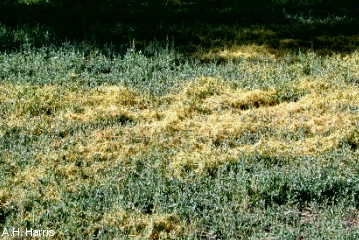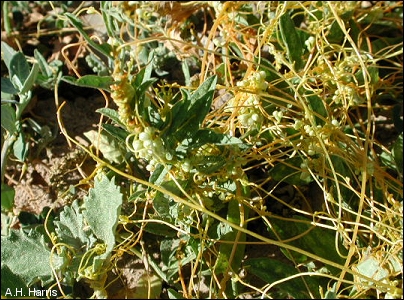

When most people think of parasites, things like roundworms, ticks, fleas, and lice tend to come to mind. But this is because people are animals, not plants, and we have very different types of attackers. If you could ask a plant, it might mention any number of parasites. But one seen by many people of the Chihuahuan Desert is another plant called dodder.
A mass of yellowish stems entangling a green plant signals one of the many species, all of which lack leaves and roots, but have the vampirish trait of living off the life blood—the sap—of a host plant. A germinating dodder shoot gropes the air until encountering the stem of a potential host, at which time it coils around its victim, piercing it with root-like haustoria—projections of the stem specially designed to drain nutrients from other plants—not unlike the way mosquitos pierce our flesh to suck our life-blood. Moisture, minerals, and calories are siphoned from its unwilling host, who suffers accordingly.
That tangle of yellow and green you may see along the roadside
represents the eternal battlefield between parasite and plant.

Listen to the Audio (mp3 format) as recorded by KTEP, Public Radio for the Southwest.
Contributor: Arthur H. Harris, Laboratory for Environmental Biology, University of Texas at El Paso.
Desert Diary is a joint production of the Centennial Museum and KTEP National Public Radio at the University of Texas at El Paso.

The straw-colored areas represent a massive infestation of dodder. Socorro, TX. 19 May 2001. Photograph by A.H. Harris.

Closeup of the straw-colored dodder entangled with its host plant. Socorro, TX. 19 May 2001. Photograph by A.H. Harris.
Correll, D. S., and M. C. Johnston. 1970. Manual of the Vascular Plants of Texas. Texas Research Foundation, Renner, TX, 1881 pp.